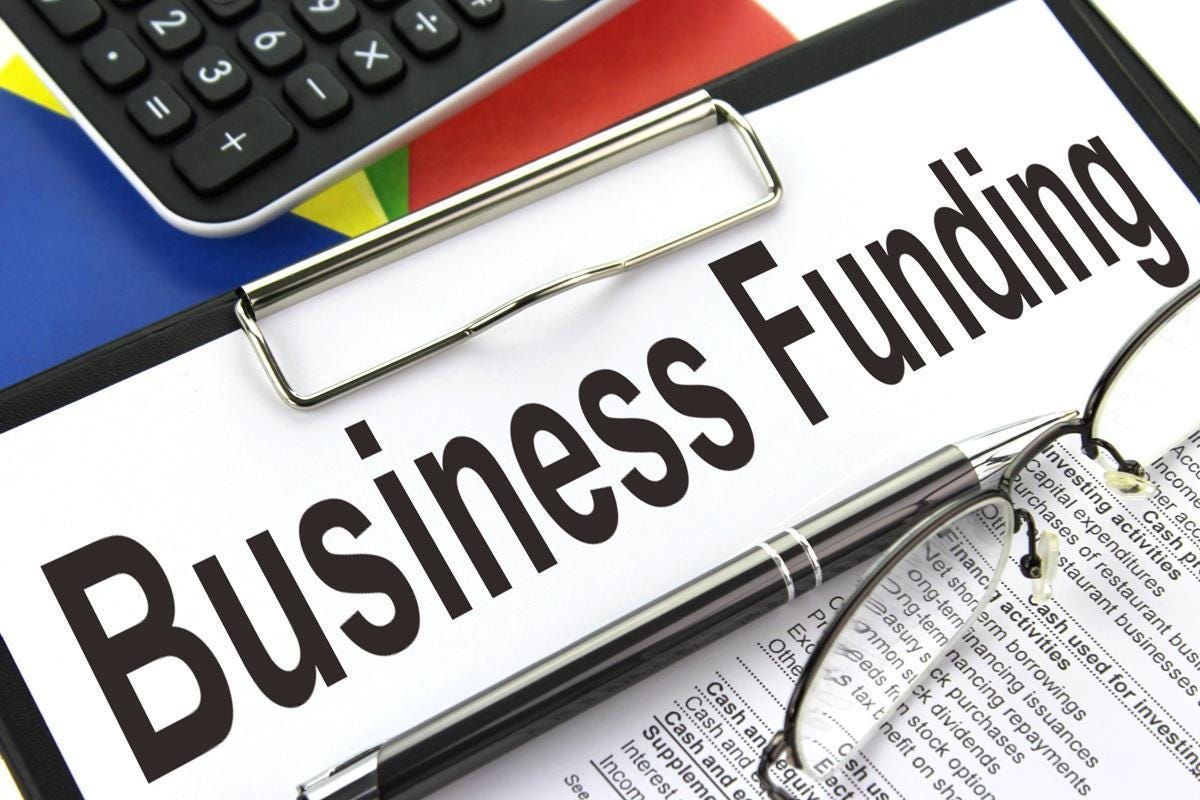In today’s fast-paced and innovation-driven economy, intellectual property (IP) has become one of the most valuable assets a business can own. Whether it’s a logo, an invention, a unique design, a creative marketing campaign, or proprietary software, protecting your IP is essential to maintaining your competitive edge and safeguarding your brand’s reputation.
According to a 2023 report from the U.S. Patent and Trademark Office (USPTO), intellectual property–intensive industries account for over 41% of U.S. GDP and employ more than one-third of the total workforce. Yet, many small and medium-sized businesses fail to take proper steps to protect these assets — leaving themselves vulnerable to theft, imitation, and legal disputes.
This guide will walk you through how to protect intellectual property for businesses in America, explaining the key types of IP protection, the steps to register them, and strategies for ongoing enforcement — all in clear, practical terms you can use.
Understanding Intellectual Property (IP)
Intellectual property refers to creations of the mind that have commercial value and can be legally protected. Unlike physical assets, IP is intangible — but it can be far more valuable than tangible property.
| Type of Intellectual Property | What It Protects | Examples |
|---|---|---|
| Trademarks | Brand identifiers such as logos, slogans, and names | Nike “swoosh,” Apple logo, Coca-Cola script |
| Copyrights | Creative works and artistic expressions | Books, music, software code, photos |
| Patents | Inventions and innovations | New machinery, drug formulas, software algorithms |
| Trade Secrets | Confidential business information that gives a competitive edge | KFC’s chicken recipe, Coca-Cola’s formula, algorithms |
Why Protecting Intellectual Property Matters
Failing to secure your IP can expose your business to significant risks, including:
- Financial loss from competitors copying your work or technology
- Brand dilution from counterfeit products
- Legal disputes that drain resources and time
- Loss of investor confidence due to poor IP management
A Harvard Business Review study found that companies with strong IP strategies are 30% more likely to attract investors and 40% more likely to expand internationally. Protecting your IP isn’t just about defense — it’s also about growth and credibility.
Step 1: Identify Your Intellectual Property Assets
Before you can protect your intellectual property, you need to identify what qualifies as IP within your business. Many companies underestimate how much intellectual property they actually own.
🧠 Common IP Assets in Businesses Include:
- Company name, logo, and tagline
- Product designs and packaging
- Website content, blogs, and graphics
- Software and source code
- Marketing campaigns and videos
- Product formulas or recipes
- Customer lists and business processes
Pro Tip: Create an internal IP inventory to list all creative or innovative assets developed by your team. Review this list at least twice a year.
Step 2: Choose the Right Type of IP Protection
Each form of IP requires a different legal process and offers different types of protection.
⚖️ Overview of IP Protection Options
| IP Type | Legal Authority | Duration of Protection | Registration Process |
|---|---|---|---|
| Trademark | U.S. Patent and Trademark Office (USPTO) | 10 years (renewable) | File with USPTO online (TEAS) |
| Copyright | U.S. Copyright Office | Author’s life + 70 years | Register on copyright.gov |
| Patent | U.S. Patent and Trademark Office | 20 years (utility), 15 years (design) | File application via USPTO |
| Trade Secret | State and Federal Law (Uniform Trade Secrets Act) | As long as secrecy maintained | No registration; keep confidential |
Research Insight:
A study from Stanford Law School found that businesses that registered patents and trademarks early in their lifecycle were 50% less likely to face IP infringement lawsuits than those who delayed registration.
Step 3: Register Trademarks for Brand Protection
Trademarks are essential for protecting brand identity — they help customers recognize your products and services.
🏷️ Steps to Register a Trademark in the U.S.:
- Search for availability using the USPTO Trademark Electronic Search System (TESS).
- Prepare your application — include logo, slogan, and product category.
- File through USPTO’s TEAS system.
- Wait for examination (6–12 months typical review period).
- Maintain your trademark by renewing every 10 years.
Pro Tip: Use ™ for unregistered trademarks and ® for registered ones.
Research-Based Fact:
According to the University of Pennsylvania Wharton School, strong branding through trademark protection can increase consumer trust and loyalty by up to 25%, directly influencing revenue growth.
Step 4: Secure Copyrights for Creative Works
Copyright protection covers original works of authorship — whether written, visual, or digital.
📚 How to Register a Copyright:
- Visit www.copyright.gov.
- Submit your work electronically.
- Pay the required filing fee (typically $45–$65).
- Receive your certificate of registration.
Examples of Copyrighted Works:
- Website copy and design
- Photographs and video content
- Marketing brochures
- Training manuals
- Software code
Legal Insight:
Under U.S. law, a copyright exists automatically once a work is created, but registration provides legal evidence in court and allows you to claim statutory damages.
Step 5: Apply for Patents to Protect Inventions
If your business creates something new — a product, a machine, or a process — a patent prevents others from making, selling, or using it without your permission.
🧪 Types of Patents in the U.S.:
| Patent Type | What It Covers | Duration |
|---|---|---|
| Utility Patent | New inventions or functional improvements | 20 years |
| Design Patent | Ornamental or aesthetic design | 15 years |
| Plant Patent | New plant varieties reproduced asexually | 20 years |
Steps to Apply for a Patent:
- Conduct a patent search on USPTO’s database.
- Hire a registered patent attorney.
- File a provisional application (optional, gives you 12 months).
- File the non-provisional application.
- Await USPTO review and approval (can take up to 2–3 years).
Research Insight:
A Massachusetts Institute of Technology (MIT) study found that startups with patent protection were 60% more likely to secure venture capital funding, as investors view patents as indicators of innovation and long-term value.
Step 6: Protect Trade Secrets
Trade secrets can be some of the most valuable IP assets — but only if they remain secret.
🔒 How to Safeguard Trade Secrets:
- Use Non-Disclosure Agreements (NDAs) for employees and partners.
- Restrict access to sensitive information.
- Label confidential documents clearly.
- Use data encryption for digital files.
- Educate employees on confidentiality policies.
Pro Tip: Trade secrets are protected under both state laws and the federal Defend Trade Secrets Act (DTSA), which allows companies to sue in federal court for theft or misuse of confidential information.
Research Insight:
A study by the University of California, Berkeley revealed that over 80% of trade secret thefts are committed by insiders — employees or business partners — emphasizing the importance of internal safeguards.
Step 7: Use Contracts to Protect Intellectual Property
Contracts are one of the most effective tools for preventing IP misuse, especially in collaborations or employment relationships.
📄 Key IP Protection Clauses to Include in Business Contracts:
| Contract Type | Purpose | Example Clauses |
|---|---|---|
| Non-Disclosure Agreement (NDA) | Prevent sharing of confidential information | Defines confidential info, duration, penalties for breach |
| Employment Agreement | Clarifies IP ownership | States that all creations made on the job belong to employer |
| Licensing Agreement | Grants permission to use IP | Defines scope, royalties, and usage limits |
| Non-Compete Agreement | Prevents employees from joining competitors | Limits time and region of restriction |
Pro Tip: Always consult a qualified intellectual property attorney to ensure your contracts are enforceable under state and federal law.
Step 8: Monitor and Enforce Your IP Rights
Registering IP is only half the battle — enforcement ensures ongoing protection.
🕵️ How to Monitor Your IP Effectively:
- Set up Google Alerts for your brand or product names.
- Use tools like MarkMonitor or Copyscape to detect infringement.
- Regularly review online marketplaces for counterfeit listings.
- Work with IP enforcement agencies or law firms to issue cease-and-desist letters when necessary.
Research Insight:
According to the University of Oxford’s Centre for Competition Law, businesses that actively monitor and enforce their IP rights maintain 25% higher brand valuation compared to those that do not.
Step 9: Protect IP in International Markets
If your business sells globally, your U.S. IP registration won’t automatically protect you abroad. You’ll need to file in each country or through international treaties.
🌍 International IP Protection Options:
| Treaty/System | Purpose | Covers |
|---|---|---|
| Madrid Protocol | Trademark registration | 130+ countries |
| Patent Cooperation Treaty (PCT) | Patent applications | 150+ countries |
| Berne Convention | Copyright protection | 180+ countries |
Pro Tip: Work with an international IP attorney to manage filings and renewals across jurisdictions.
Step 10: Leverage IP as a Business Asset
Once your IP is protected, it becomes a powerful business tool. You can license, sell, or franchise your intellectual property to generate additional revenue.
💼 Ways to Monetize Intellectual Property:
- Licensing: Grant permission for others to use your IP in exchange for royalties.
- Franchising: Use trademarks and business models for expansion.
- Partnerships: Collaborate with other companies using shared technology.
- Collateral: Use IP assets to secure loans or attract investors.
Research Insight:
The University of Chicago Booth School of Business found that businesses with active IP licensing programs experience 20–30% higher growth rates, due to diversification of income streams.
Common Intellectual Property Mistakes to Avoid
- Failing to document creation dates — keep clear records of all innovations.
- Not renewing registrations — trademarks and patents require periodic maintenance.
- Assuming your U.S. IP is protected globally.
- Ignoring employee agreements — unclear ownership can cause future disputes.
- Delaying registration — once an idea goes public, protection options narrow.
FAQs About Intellectual Property Protection in the U.S.
Q1. How much does it cost to protect intellectual property in the U.S.?
A: Costs vary — trademarks typically cost between $250–$350 per class, copyrights $45–$65, and patents several thousand dollars, depending on complexity.
Q2. Can I protect my idea without a patent?
A: Yes, through NDAs and trade secret laws, though these do not provide exclusive rights like a patent.
Q3. How long does it take to get a patent approved?
A: The USPTO patent approval process can take 18 to 36 months, depending on the complexity and backlog.
Q4. Do I need a lawyer to file IP protection?
A: It’s not required, but hiring an IP attorney greatly increases the chance of approval and ensures proper legal coverage.
Q5. What happens if someone infringes on my IP rights?
A: You can issue a cease-and-desist letter, file a civil lawsuit, or seek damages under federal IP laws.



